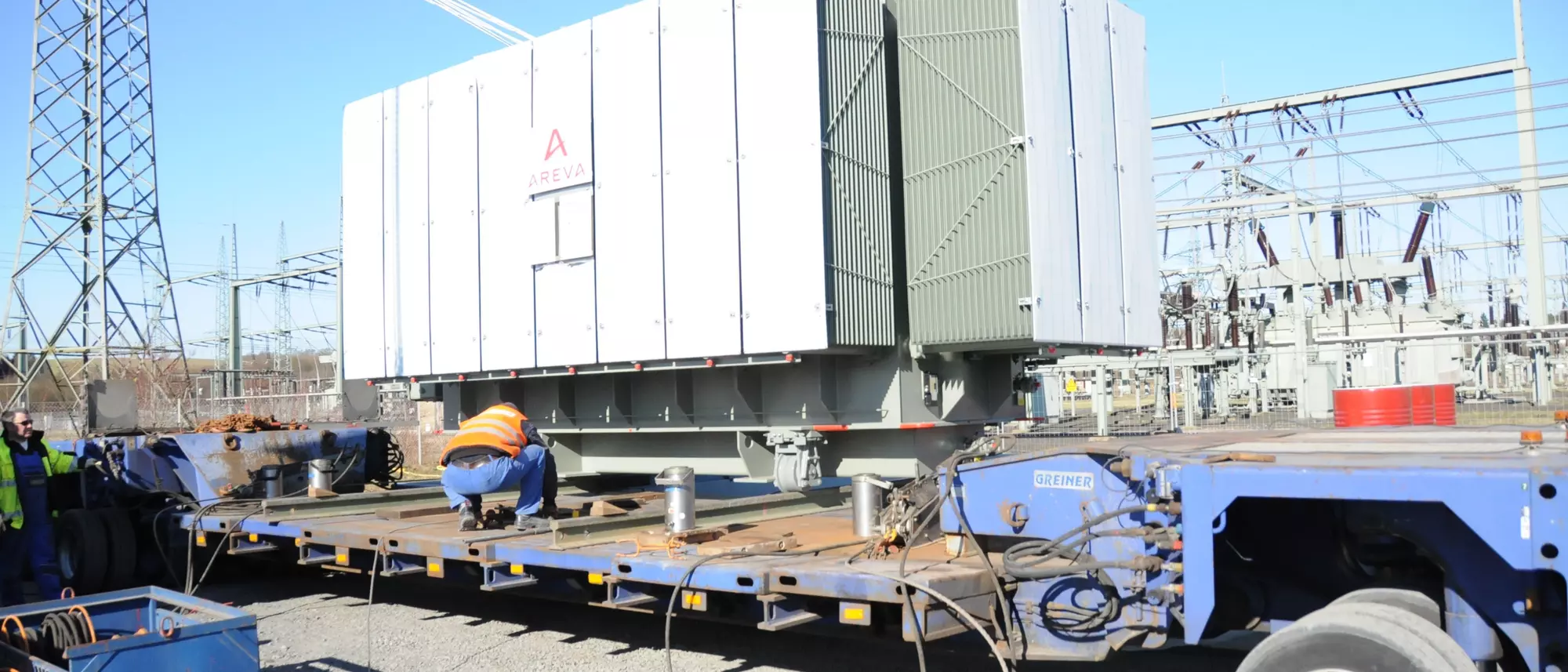
Giessen. Over the past 11 months, SWG and its network company Mittelhessen Netz GmbH (MIT.N) have installed a new transformer and switchgear panel at the northern substation in Giessen, which almost doubles the capacity of the substation. This is the largest single investment in Giessen's electricity grid in the past two decades. This was stated by MIT.N Managing Director Frank Hoffmann on 29 August during an on-site meeting with the press. The new acquisition is a so-called vacuum transformer weighing around 100 tonnes, which can supply around 25,000 households with electricity. The transformer is of the latest design and is therefore sealed airtight, which makes it particularly low-maintenance and fail-safe.
One of the reasons for the expansion of capacity at the northern substation is the constantly increasing demand for electrical power from trade and industry in this area, one of Stadtwerke Giessen's largest electricity customers. "If our commercial and industrial customers continue to grow, so must we," says SWG company spokesperson Ina Weller, summarising the initial situation. It is not just a question of pure supply performance, but also of security. Even brief interruptions could lead to serious production disruptions for industrial companies. The supplier has to plan for all eventualities.
MIT.N CEO Frank Hoffmann agrees: "If we expand our substation now, we will still have sufficient power reserves tomorrow, and not just for commercial and industrial customers."
Planning for decades
The new transformer is one of eight in the SWG area that transforms electricity from the high-voltage grid from 110,000 volts down to 20,000 volts medium voltage. As the five substations in Giessen are networked via a so-called ring circuit, they can support each other in the event of fluctuations in the grid. In this way, the expansion of the North substation also increases the security of the electricity supply in Giessen and the surrounding area and creates power reserves in the grid infrastructure. With this additional capacity, Stadtwerke Gießen is also preparing for the requirements of the energy transition, which will see significantly more decentralised electricity being fed into the grid in the coming years. This influx of electricity from wind and solar power, which is often difficult to predict, places additional demands on the energy grids. "We have to plan extremely long-term here," says Frank Hoffmann. "Experience shows that transformers, even older ones, can easily operate reliably for more than four decades. We therefore have to plan half a century into the future when it comes to grid infrastructure." Thinking in such long-term terms requires a considerable degree of willingness to take responsibility on the part of utility companies and politicians alike. Conversely, short-term thinking is a sure recipe for serious problems in the future, warns the Managing Director of SWG-Netzgesellschaft.

